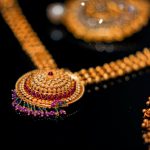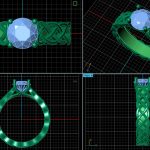Indian Jewellery Through History: Changing to Constant
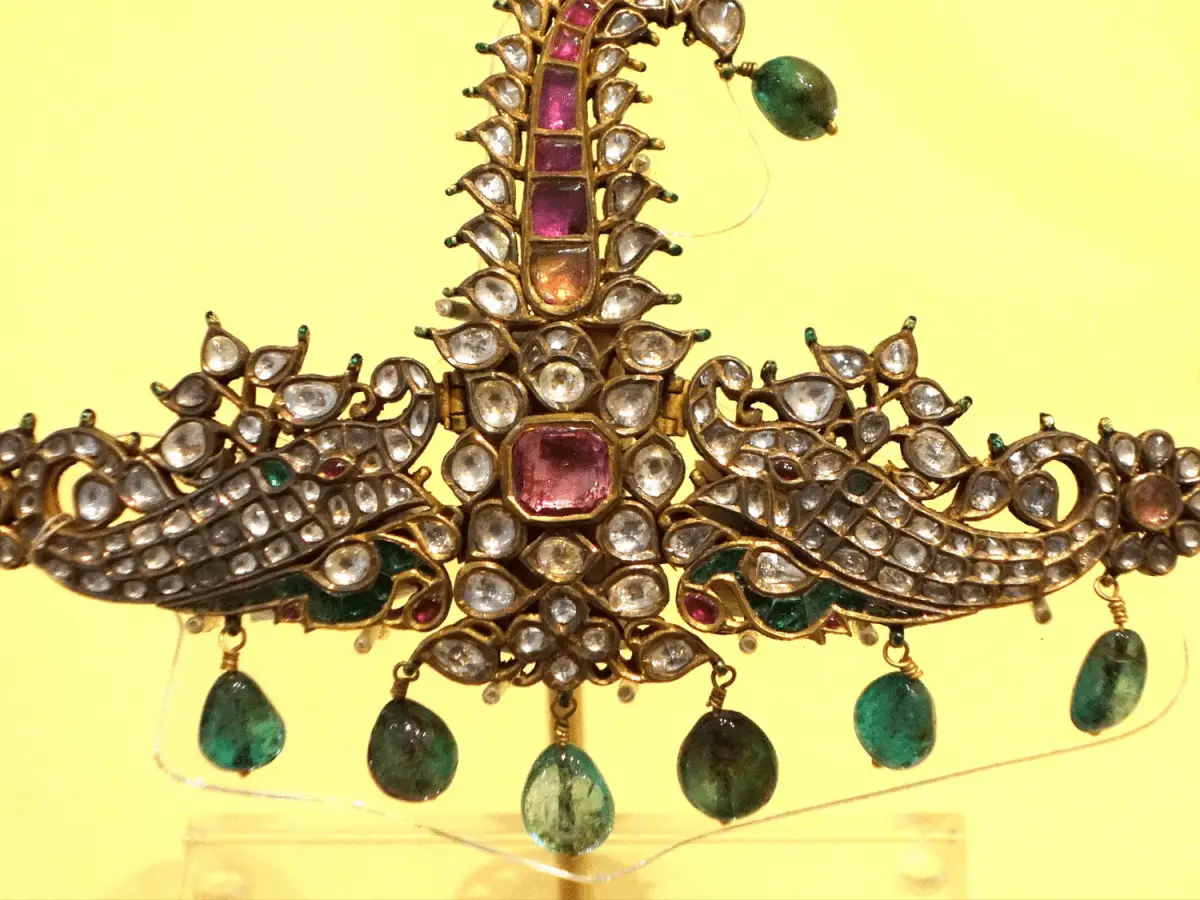
History of Indian Jewellery: Elaborated
History of Indian jewellery dates back to the year in the world of jewellery. It is timeless and has a cultural significance. Indian jewellery has always been in the eyes of the world, be it travellers or invaders. before we enter into the realms of british raj, Indian jewellery has always been the most attractive part of Indian culture. It is seen that most jewellery has always been made of gold and the gold has been given different forms to make creative designs let us look into one of the many examples where ancient Gold jewellery making was divine.
There is a live example of hearings from the southern part of India. The earrings are three inches wide and 1.5 inches long in the New York Metropolitan Houses. The craftsmanship on these earrings is very interesting and elaborate. design of the wires, giving it a curling wine shape. That design is adorned with beautiful flowers and leaves, and there are gold granules all over the design of the artisans.
Since ancient times, the inspiration for gold jewellery has always come from nature. animals, trees, leaves, and flowers, which were depicted skillfully on many designs. You can also witness the presence of gods and goddesses in the design; for example, Lakshmi Devi, Lord Ganesha, Hanuman and many more such examples are present in our ancient jewellery and we see them today as well.
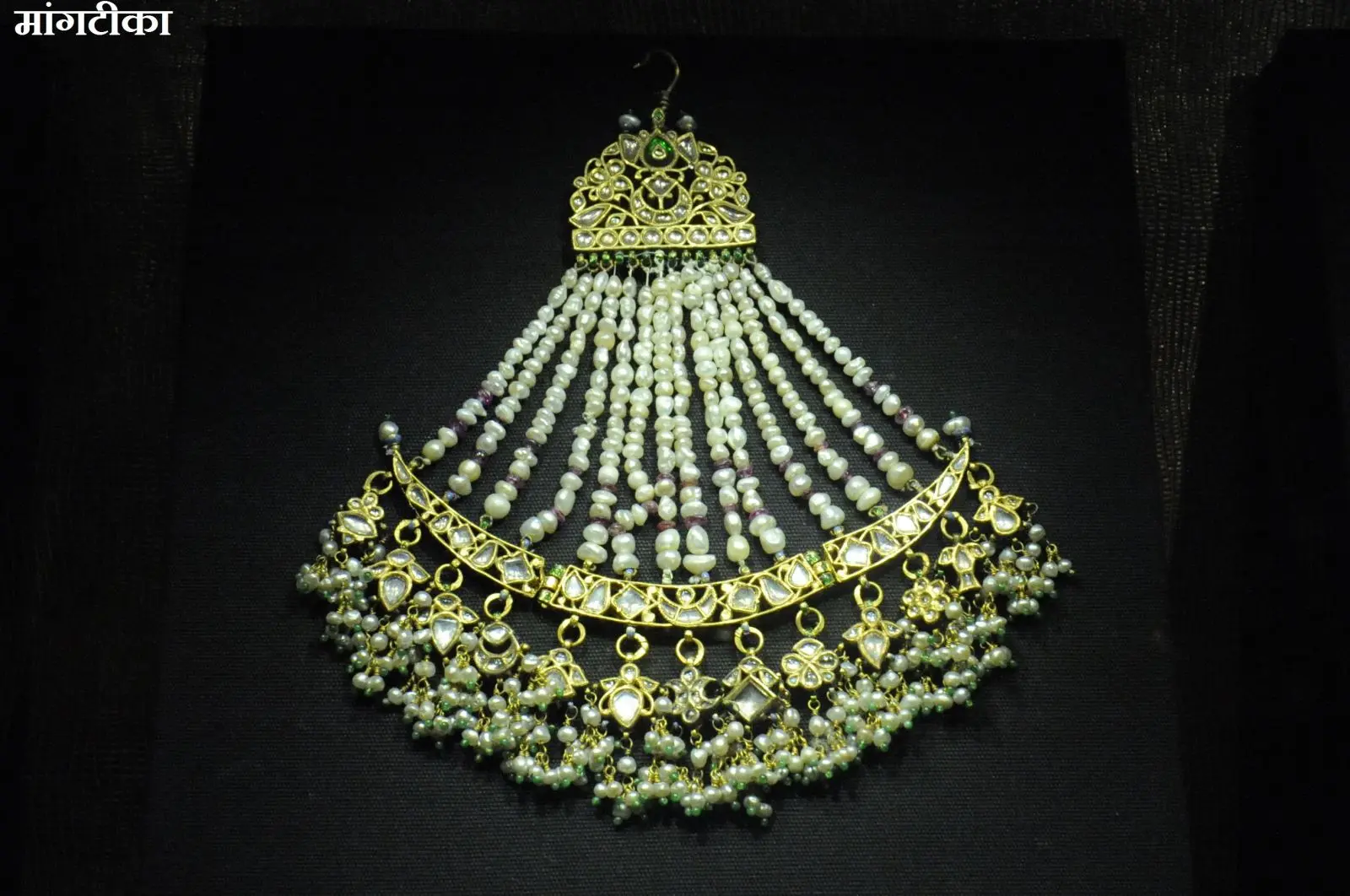
Maangtika
The ancient jewelry-making process gradually diminished when Mughal Empire started to rule in the country The Mughals had a specific design for their own jewellery. the Queens and kings fought more of pearls, stones, Rubies and Diamonds. Mughal Empire has always been the elaborated version of the baroque period. they were famous for invented a new kind of design in the jewellery part and these designs were known as Jadau. jadau This design was mainly made out of diamonds, polkis and kundans, which required l of gold and more of shine. The craftsmanship of these design were very different and gained popularity in no time. There was a major distinction between the goal ornaments and the Mughal ornaments in that the designs of gold ornaments were very common in Greece and Egypt as well. The granulated gold pattern was found in those countries even in the 6th and 8th centuries, and this was common because of the trading lines through the Mediterranean and Indian Oceans. But in the Mugal era, the Kundan and Jadau designs were not found anywhere else. The Mughals made sure that what they wore in the Indian Empire was not to be seen elsewhere.
Every piece of jewellery from the Mughal Empire was a milestone. It was very clear that the artisans or the goldsmiths who made these designs had a specific training and measuring system. They took inspiration from the royal courts of Gujrat and Rajasthan. And Jaipur became the centre for the kundans. And till today, the kundans and polkis have become an integral part of Indian culture, especially at weddings.
Persian and indian Technique
Jadau jewellery style had a very significant depiction of cultural significance—the amalgamation of Indian Persian jewellery-making style. The designs and the ornaments were very elaborate and during the Mugal era, the jewellery was heavy and long enough to make a person wobble while standing. Gradually, the designs were reduced in size but the craftsmanship never changed.
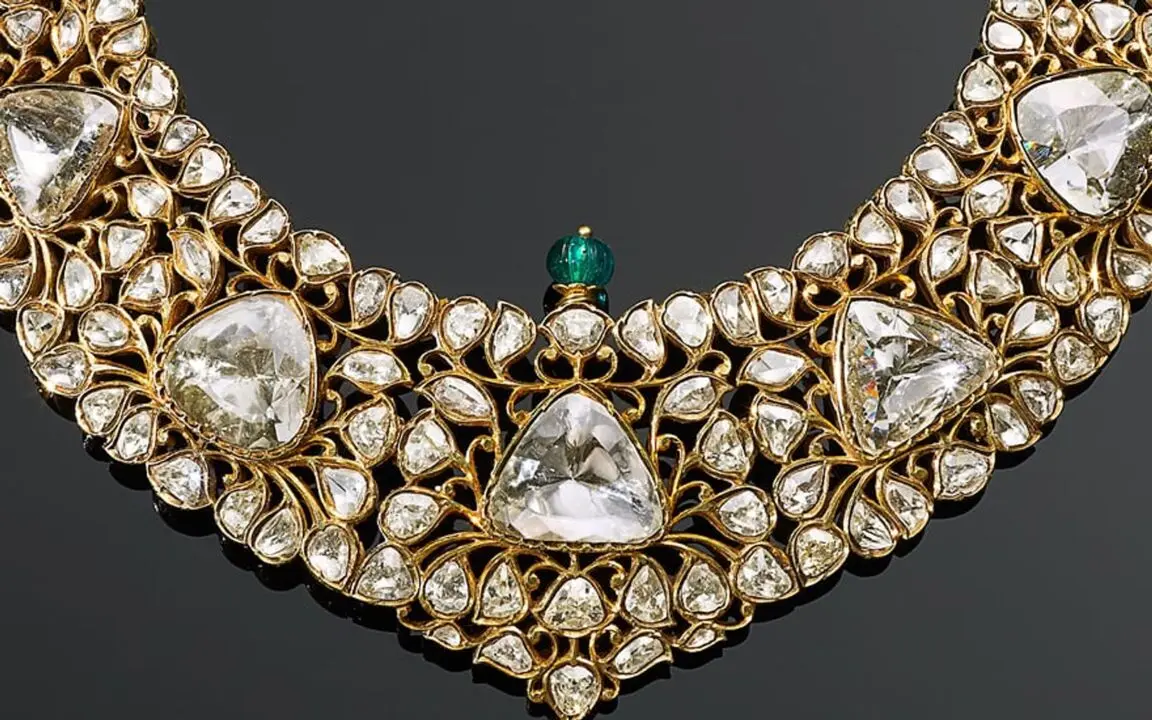
Crafting procedure:
The kundan ornaments are made in 24 Karat gold, and later on, they were made in 22 Karat gold. The art and the craftsmanship are known as gadhayi. Individual strips are taken to make the individual designs and later the second process is taken up, known as khudayi. The strips are cut and engraved together in certain patterns and motifs.
The last one is the part where the patterns are filled with colors and this process is known as meenakari. The pieces are then joined together on a gold sheet. Each piece takes hours of crafting and months to produce the final product.
Motifs:
Kundans and jadau are traditionally made with floral motifs and anything that connects to nature. Like lotus, carnations, tulips, etc.
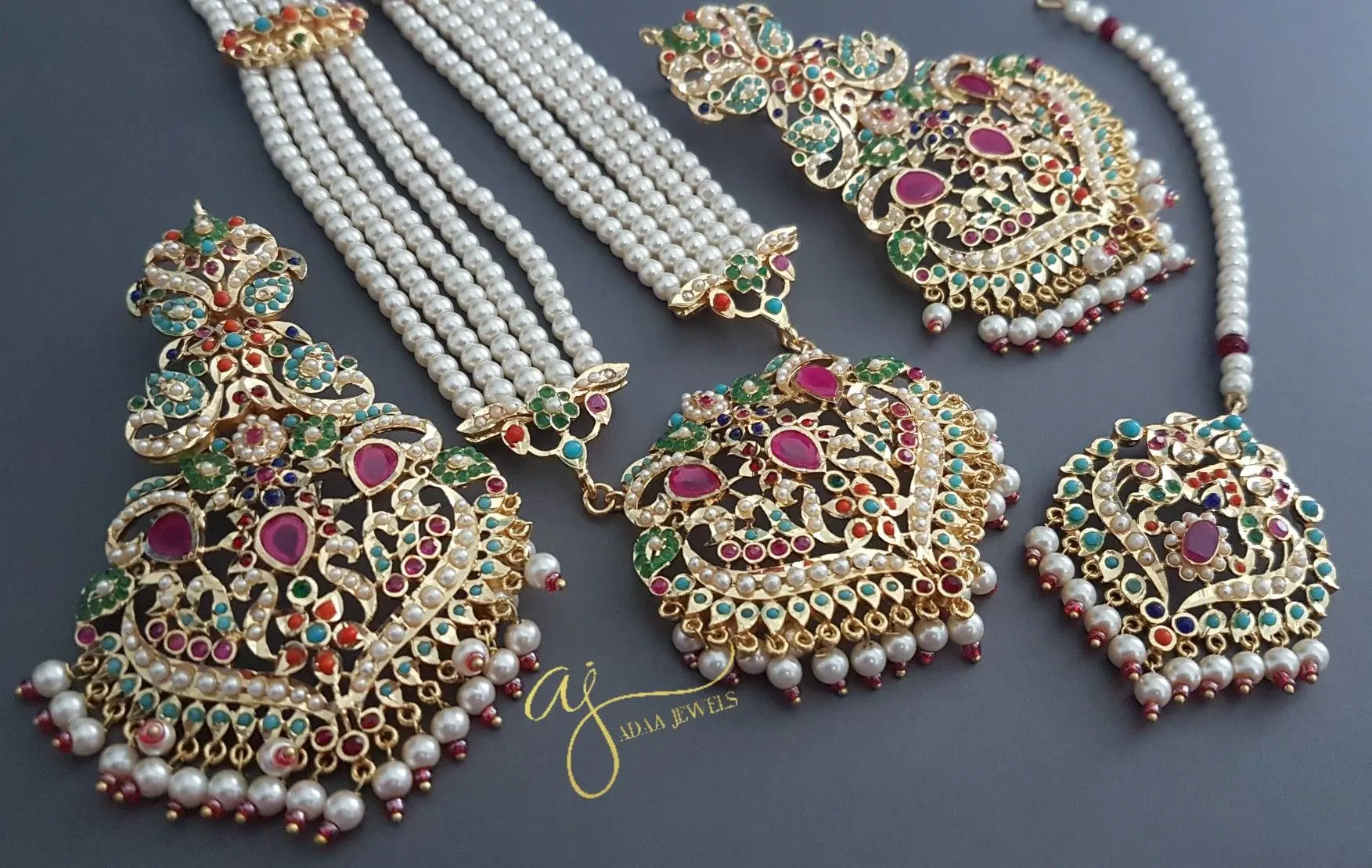
Lifespan of Kundan Jewellery:
Just like traditional Indian ancient jewellery became minimal in years, kundan and jadau are also going to diminish slowly. But recently, Heeramandi has begun the revolution of Kundan jewellery as a revival of this craftsmanship during British raj time. As minimalism is walking into the lives of people these days, jadau and kundans are slowly getting a back seat. Also, the real kundans take months to be made and the price is definitely through the roof. That is why people are walking towards the imitations of the original kundan sets. That is why these jewellery pieces are set to be worn only on special occasions, like weddings.
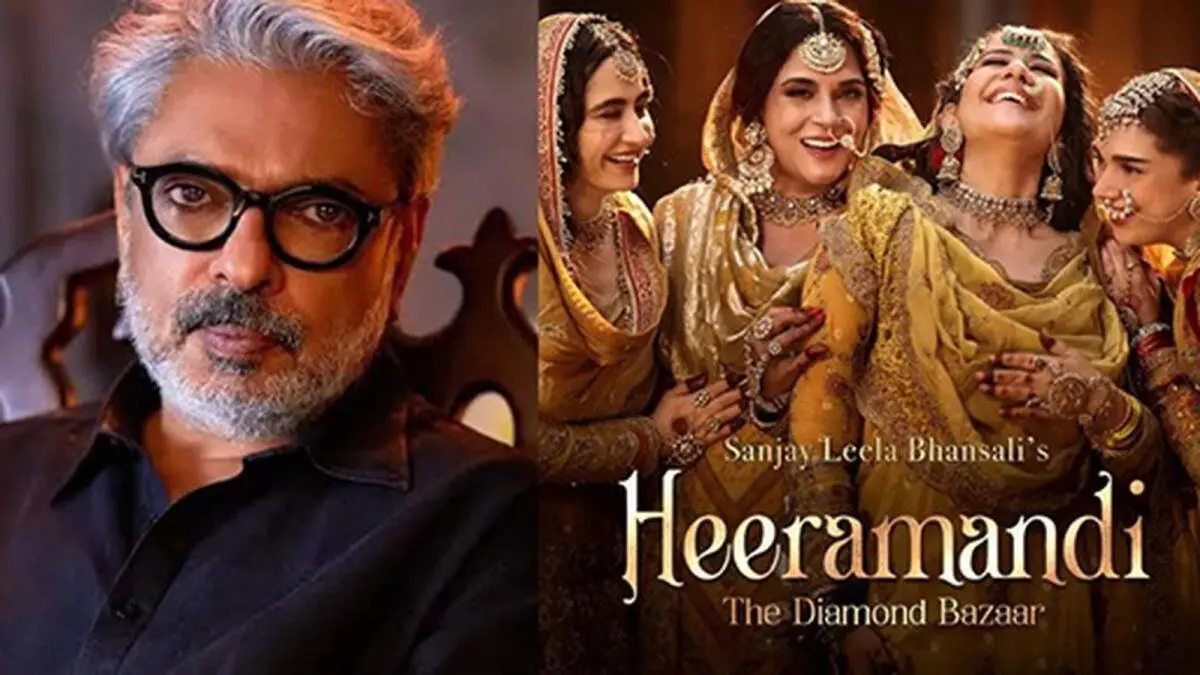
Khaleej times
There is so much more to the field of jewellery making and you can learn in depth about it at JD Institute of fashion technology, fashion technology. Join us and make your dream come true by learning about the craftsmanship of the jewellery. Connect with us today.






